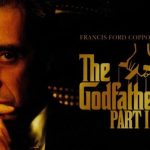Dances with Wolves 2: Return to the Plains (2025)

More than three decades after the original masterpiece captivated audiences, Dances with Wolves 2: Return to the Plains arrives as a rare sequel that dares not to imitate but to evolve. It is both a continuation and a reawakening, a story rooted in history yet vibrating with urgent modern resonance.
At its heart lies the legacy of Lieutenant John Dunbar, immortalized by Kevin Costner. Though Dunbar himself has long since faded into memory, his presence endures through his son — a man born of two worlds. Raised within the Lakota nation yet haunted by the shadow of his father’s choice, he embodies the fragile, contested identity of a generation caught between tradition and transformation.
The film’s narrative is not one of nostalgia but of reckoning. The son is pulled into a world reshaped by the relentless advance of railroads, fences, and settlements — symbols of progress that slice through sacred land. His journey becomes a visceral confrontation with forces that seek to erase his people’s way of life, even as he struggles with his own fractured inheritance.
What makes Return to the Plains remarkable is its refusal to simplify. The young man is not merely a warrior, nor a victim of history, but a human being navigating contradictions. His Lakota spirit urges him to defend his people, while his bloodline ties him to the memory of a soldier who once turned his back on empire. The tension between those truths drives the film with poetic weight.
Visually, the film is nothing short of breathtaking. Sweeping plains, golden sunsets, and intimate campfires are framed with reverence and precision. The cinematography mirrors the themes: expansiveness laced with fragility, beauty shadowed by encroaching violence. Each shot carries the duality of awe and ache.
Equally stirring is the score — a haunting blend of orchestral grandeur and Indigenous rhythms. The music lingers like a lament, evoking both the dignity of memory and the sorrow of loss. It enriches the film’s emotional landscape, guiding audiences through moments of triumph, grief, and quiet resilience.
One of the most vital achievements of Return to the Plains is its commitment to authenticity. Lakota language is spoken not as ornament but as heartbeat. Indigenous actors and voices are not background but central to the story, ensuring that the film’s soul belongs not only to Hollywood but to the people whose history it seeks to honor.
Thematically, the film grapples with cultural survival. It asks whether memory can be enough to withstand erasure, whether identity can endure when land, language, and ritual are under siege. It is not just about one man’s struggle but about the universal fight to preserve truth in the face of obliteration.
Kevin Costner’s presence is felt even in absence. Through flashbacks, echoes, and the reverence of those who remember him, Dunbar remains a ghostly guide. Yet it is his son’s story — shaped by courage, conflict, and an unrelenting search for belonging — that carries the torch forward. This makes the sequel not just respectful of the original, but necessary.
Rated 8/10, Dances with Wolves 2 stands as a cinematic poem: visceral, poetic, unforgettable. It balances epic scale with intimate emotion, political urgency with spiritual depth. Few sequels dare to honor their roots so fully while carving a new path. This one does — and in doing so, it reminds us that history is never over. It lives in us, in the land, and in the stories we choose to tell.
Related movies:











